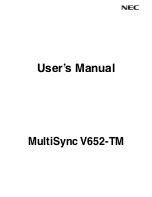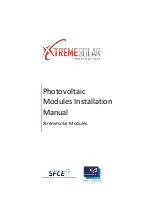
* (8) Gel-Filled
Butt Connectors
(included)
Step 2:
Red/Yellow
Green/Yellow
Step 1:
Cut Yellow wire
to put into the
"UNIVERSAL MODE"
Step 3:
Orange
Orange
S2
1
2
3
ON
1
2
ON
S1
VIKING
©
MODEL LC-6
VIKING
ELECTRONICS
HUDSON, WI 54016
POWER
13.8 VAC
1 2 3 4 5 6 7
10 11
8 9
12 13
STATUS
EARTH GROUND
DIAL
9 MODE
F
AUL
T CHECK
LEARN MODE
LINE IN
FIRE FLOOR PHONE
MACHINE ROOM PHONE
LOBBY
PHONE
DISPLA
Y
LV
-1
K
14 15
EMERGENCY
PHONE 1
EMERGENCY
PHONE 2
EMERGENCY
PHONE 3
EMERGENCY
PHONE 4
EMERGENCY
PHONE 5
EMERGENCY
PHONE 6
16 17 18 19 20 21 22 23 24 25
AUDIO SENSITIVITY
6 PORT LINE CONCENTRATOR
FOR EMERGENCY PHONES
Viking Model LC-6
(not included)
For more information
on the
LC-6
, see
DOD# 245
.
Yellow
Back View of LV-1K
VIKING
Model: xxxxxxxxx
Complies with FCC Part xx
Reg. No.: xxxxxxxxxxx
REN: xxx
V
iking Electronics, Inc. (715)386-8861
1531 Industrial St., Hudson, WI 54016
P/N: DEV
:
xxxxxxx
S/N: xxxxxxxx
RoHS
1 2 3
ON
Step 6:
12V DC
Adapter
(included)
120V AC
Step 4:
Red/Black
Black/Red
STEP 5:
Solid Red
Solid Green
* Note:
The gel-filled (water-tight) butt connectors are designed for insulation displacement on 19-26 gauge wire with a maximum insulation
of 0.082 inches. Do not strip wires prior to terminating.
2. Wiring to the Viking Model LC-6
When the
LV-1K
is wired in the below sequence, it will also test the unit for proper operation.
Step 1
.
Cut the YELLOW wire loop to put the
LV-1K
into the “Universal Mode”.
Step 2.
Connect the RED/YELLOW and GREEN/YELLOW wires to
LC-6
screw terminals 2 and 3.
Step 3.
Connect both ORANGE wires to
LC-6
screw terminals 12 and 13.
Step 4.
Keeping the solid red and solid green wires disconnected, connect the RED/BLACK and
BLACK/RED wires to the included 12 volt power supply. Once powered up, the
LV-1K
will start
continuously flashing its red LED and sounding the beep tones every 30 seconds to show there is
a line failure.
Step 5.
Connect the solid RED and solid GREEN wires to the telephone line. The
LV-1K
will detect the
presence of Talk Battery voltage and clear its audible and visual indications.
Step 6.
With the
LC-6
powered up, flip its DIP Switch position 2 to ON. This will cause the
LC-6
to run its
own Line Verification Test which verifies the telephone line has loop current and that each of the
emergency phones will answer an incoming call. If the
LC-6
finds a fault, it will signal the
LV-1K
on
the orange wire pair causing the
LV-1K
to show there is a line failure. If this is the case, refer to the
LC-6
Technical Practice
(DOD# 245)
, to clear the fault before proceeding. Tip: If less then six
emergency phones are used, the
LC-6
needs to be programmed with the actual number of emer-
gency phones used.
IMPORTANT:
Electronic devices are susceptible to lightning surges from the telephone line. It is recommended that a surge protec-
tor be installed to protect against such surges.
!
4
























